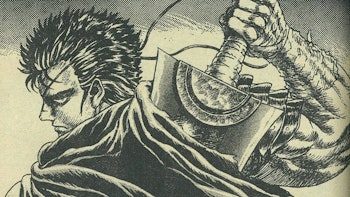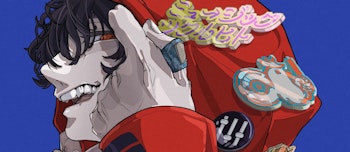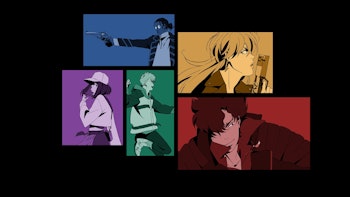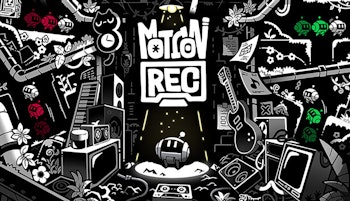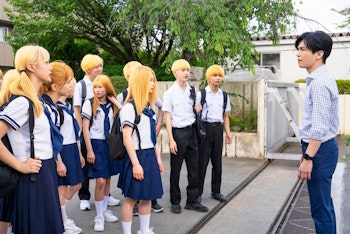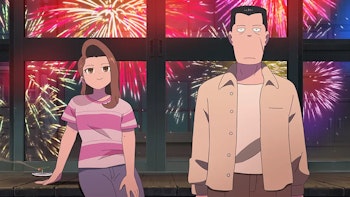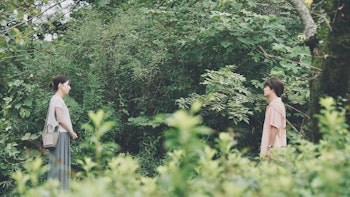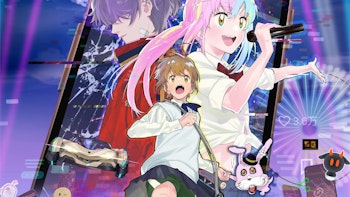
There’s a difference between saying you’ll do something, sharing your grand plans for a new project, and actually taking steps towards making it a reality. To have any hope in achieving your dreams, you have to be self-motivated and hungry for it, seizing the initiative in achieving your goals. If you aren’t proactive in practicing and improving, or seeking advice or experience from others, you’ll eventually hit a wall that can’t be overcome by merely coasting through life. You must act, and that’s what made Akiko Higashimura’s honest and self-critical autobiographical manga, Blank Canvas: My So-Called Artist’s Journey, so relatable upon its initial release in 2012.
It propelled the series to becoming a sales success and even helped it earn multiple placements on the prestigious Kono Manga wa Sugoi rankings in the mid-2010s with female readers. With such praise it’s surprising that it’s taken this long to be adapted in any form. As well as somewhat disappointing that, while still structurally present and emotionally-resonant, the power and internal reflection of the story has been neutered in a competent-yet-generic live-action shell.
For those less familiar, Higashimura has carved a career for herself with human stories that touch on the relatable flaws and minor dramas within those around us, particularly with her series Princess Jellyfish. She possesses a distinct visual style rooted in her study of art through high school and university, combined with a probing ability to capture ordinary people for all their warts, joy and tears. It’s helped her craft a distinct identity for her and her work even outside of Japan, which is exactly what made her frank self-teardown filled with regrets so powerful to read.
The movie follows the manga closely. While we’re already aware of the success the author would later achieve, her high school existence is defined by wasted potential hidden behind grand proclamations. Higashimura (portrayed in the film by Mei Nagano) dreams of becoming a manga artist, yet rather than pursuing this goals coasts through life on merely reading, not creating. The uncritical praise for her art by tutors and friends only encourages this. A recommendation to meet with a somewhat-eccentric rural recluse of an art teacher, Hidaki (Yo Oizumi) is her sudden snap back to reality, her certainty in her ability to enter elite art schools contrasted with his gruff dismissal of her work as no-good. The proportions are wrong, there’s no heart, there’s no understanding. So try again, learn, and draw! Draw! Draw!
His drill sergeant cries become a repetitive beat of the drum in the movie as she goes to his lessons, attempts to enter art school, and tries, at last, to improve. Draw! Yet his love for traditional art and the slow approval he gives for her efforts only makes her more scared to tell the truth about her dreams lying elsewhere, a fear that only impacts her desire to work when finally stepping out from his judging eye.

This is Higashimura’s story, but its ultimate resonance is as a love letter to a teacher that knew what was best when she refused to listen. Hidaki is a crass old man who she came to appreciate only when it was too late. These nine years from high school to manga debut depict a tough but ultimately loving relationship. Initially she despises his cruelty, the occasional violence, a nary-a-nice-thing-to-say attitude when teaching even young kids. However there’s respect - and behind this tough love, genuine adoration - for art and those who pursue it. He’s a tough teacher, easy to misunderstand, but he’ll never give up on you.
Draw! We see this best in the strained love defining their bond. In one early teaching scene, despite her only feigning illness to get out of his class on particularly-taxing day, he puts Higashimura on his bike to get her to the earlier bus on time , then waits with her for hours for the next one when they miss it. In another, after struggling to find anything to draw for an assignment and having a breakdown in the process, he comes to her house with determination to get her to draw even the simplest of things. He says the thing she must hear right when she needs it most: even the smallest things can be beautiful if only you look harder.
It’s a complex relationship imbued with the retrospective regrets of a mature soul lambasting her prior immaturity. Even as Hidaki never stops believing in her, she lies to preserve the image of a model student she never was, even when he witnesses the truth for herself after visiting her school. Higashimura’s arrogant eyes view her on an inevitable path that gives her the freedom to disavow her duty to practice. It’s laziness depicted as mundane, uncaring reality, a silent and unspoken betrayal.

Draw! As someone who creates and writes even outside of their work, reading the manga and watching this film, I hated seeing this part of myself reflected in these acts. Nowadays I practice my writing and crafts more often than Higashimura, but only because I learned from these mistakes. I can admit to falling into the same traps of coasting on lies and make-believe with a belief I simply deserved greatness, the betrayal to myself and those who believed in me by pretending deemed unimportant.
Still, revisiting this story via this movie was disappointing. It’s far from bad, but it disappoints for neutering its personal rebuke into a more generic tale of overdue gratitude to our mentors and those who believe in us. For all the manga was unflinching in simultaneously lambasting Higashimura's younger self and showing whatever thanks she could for her late mentor, the movie pulls back to hit a check list of tragic drama tropes.
We have the enemies-to-friends camaraderie, a flashpoint (here the visit to the art school) that strains their relationship and minimizes their relationship until a tragic, cruel twist of fate that forces the main character at fault to recognize their mistakes. All culminating in an emotional finale that leaves you reflective and grateful just a little more for those around us we often take for granted.

You know what, the formula works! Even in its more simplistic, by-the-numbers, almost-forgettable state, with some strong acting and competent directing it’s cathartic to let out tears as events unfold and you see yourself reflected on screen. Yet what separates a film that falls into this category from a tragic drama whose emotional resonance comes from forcing a deeper personal re-contextualization of events long after the credits have rolled (such as with She Taught Me Serendipity) is a vulnerability and authenticity that the polished approach of Blank Canvas overlooks.
The original manga was etched with unspoken words willed into the beyond with every stroke of Higashimura’s pencil. We may witness the same lackadaisical, meandering lifestyle in this film, the same student-teacher conflicts, the eventual realization of a dream only when she faces hardships and without telling her teacher just how much she meant to him. But we never step one centimeter inside her soul to understand why. The film can preach the identical message of the need to act on your dream and tell those who inspire you just how much they mean to you, but if we never actually feel or see the character come to this realization in a way that connects to the audience on a deeper level, then all we get is a polished lecture.
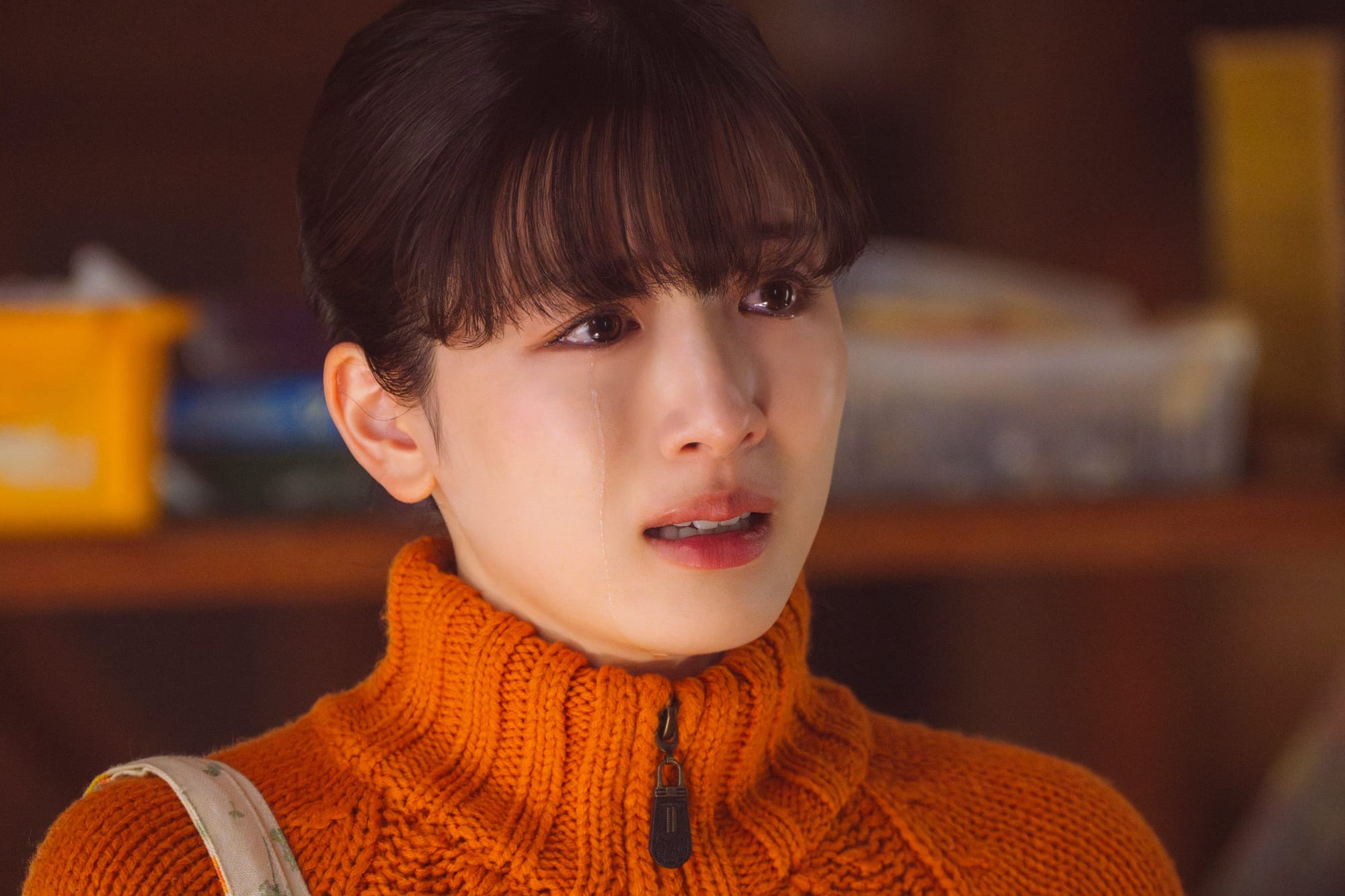
Draw! This lecture, through the strength of its original, brutally-candid story and a touching closing sequence that only-too-late treats these characters as the real people they’re based upon, says what it must. But it's forced, a cliché story moving me to tears thanks to its source material and through the relatability of the intertwined experiences it portrays in both flattering and judgmental gazes, nothing more.
Blank Canvas' manga was a reminder to draw, draw, draw, create, and to live without regrets for letting time pass you by. This is just a movie.
